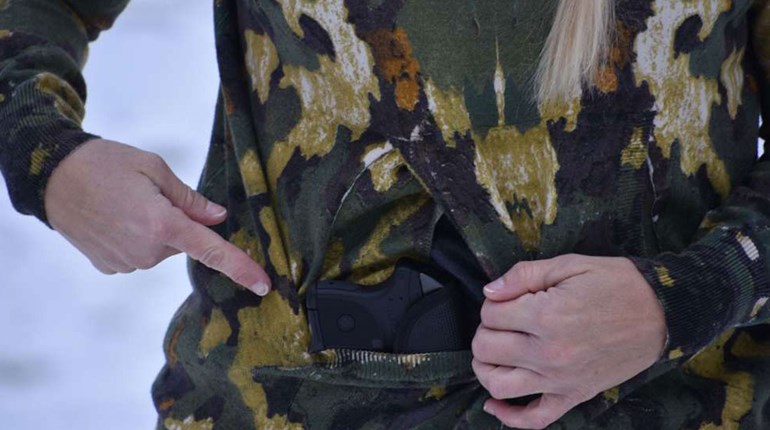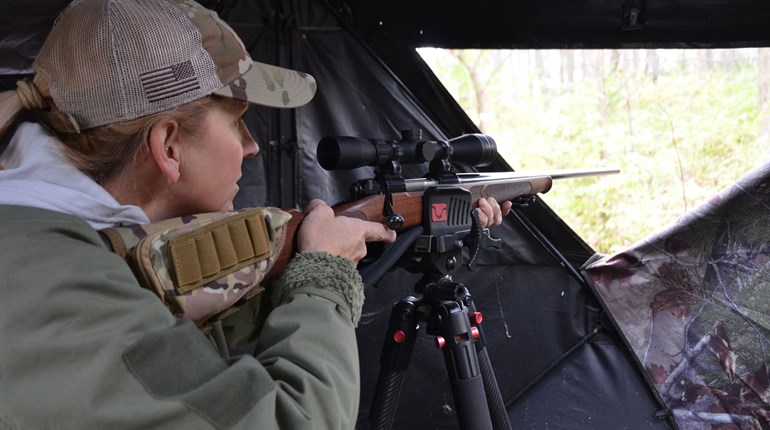
Do you want to see better and faster through a rifle optic? Here are a few easily fixed mistakes that will help even novice firearm owners.

Poorly Positioned Optics
When you set up a rifle with an optic, make sure the optic is positioned to give the proper eye relief to the person who will use it. Little in rifle shooting is as frustrating as trying to get the proper eye relief if the firearm is set up with the scope positioned too far forward or too far backward.
What does proper eye relief look like? The optic should be positioned so that the person using the firearm is able to see through the glass without any shadow. The surest way to achieve this is to have a rifle stock that is the correct length of pull; the user positions it in their shoulder and confirms that they will be able to get the proper eye relief. If the user sees gray or black shadows in their optic, as if they’re looking through a tube, he does not have proper eye relief. The user needs to get his face closer (or farther away from optic) and if they cannot, this usually means the optic needs to be moved.
Sometimes when shooting prone or kneeling, if the firearm is up higher, the length of pull can be too long. If you are using someone else’s rifle and the eye relief is off and you cannot move the optic, try first to adjust the length of pull. You can even add a “riser” to your cheekpiece with some self-stick foam from a craft store.
Poor Positions with your Body
How you set your body up behind the firearm matters. Whether you are using a rifle, shotgun or pistol with an optic, bring the firearm and optic up directly behind your body with your body mass behind the gun. Your body should be facing the target right behind the gun—not bladed to the target and just the shoulder behind the gun. This means that you find the pocket in your shoulder, and the buttstock goes there. You want the buttstock up high enough to get a good engagement with your shoulder, but not so high or low that just the top or bottom of the buttstock is in your shoulder.
Your goal of getting yourself and your body mass behind the gun should be the same whether you shoot standing, kneeling or prone off a rest. The only thing that really changes is where in your shoulder pocket the firearm sits. It should be with your head as level as possible. (Often, people will find the need for a shorter stock when shooting a rifle from kneeling or prone and prefer it be a little longer for offhand.) If you see a person struggling to gain proper eye relief or they look like they are shoving their neck backward, or craning to get closer, it’s a good call to check the length of pull first.
If you have to shoot multiple targets, this is the time to consider your natural point of aim. Set up so your body is facing the middle of an array of targets, and you can easily move or transition from one to another. For a rifle, it’s generally fastest to get your eyes to the next target by shooting targets from right to left (for right eye dominant people) or left to right (for left eye dominant people). Moving from one target you see through the scope to the next target by using your non-dominant eye (which is not looking through the scope), will help you to find your next target faster.
Bad Balance
Balance starts with building a base of support. But it ends with our head! While almost anyone can hold an awkward position or shoot off one leg for a single shot, it’s not the best way to set up for success or for multiple shots.
Whether you will stand, sit or kneel, get behind the gun on a wide base of support and get as many points of contact as you can. For example, off a rest or bag from a table gives you support under the forearm of a rifle, and your elbows on the table. That’s three points of contact.
Whatever position you shoot from, the next step is to keep your head upright and level. Look at your target while holding your firearm and bring the optic up to your eye. For pistol shooting, bring it up to your eye level. Skip tilting or tipping your head to the side, since your inner ear and balance are going to be disrupted by that positioning.
Until you are skilled, shooting from a stationary, solid base of support (whether that’s off a bench or prone on the ground), with your head level and using a firearm set up for you, is the best way to get hits on target. After you master basic skills, balance is extremely important to shooting on the move and from awkward positions.
So set up your gear properly, be methodical and build good habits, and hit the range!













































